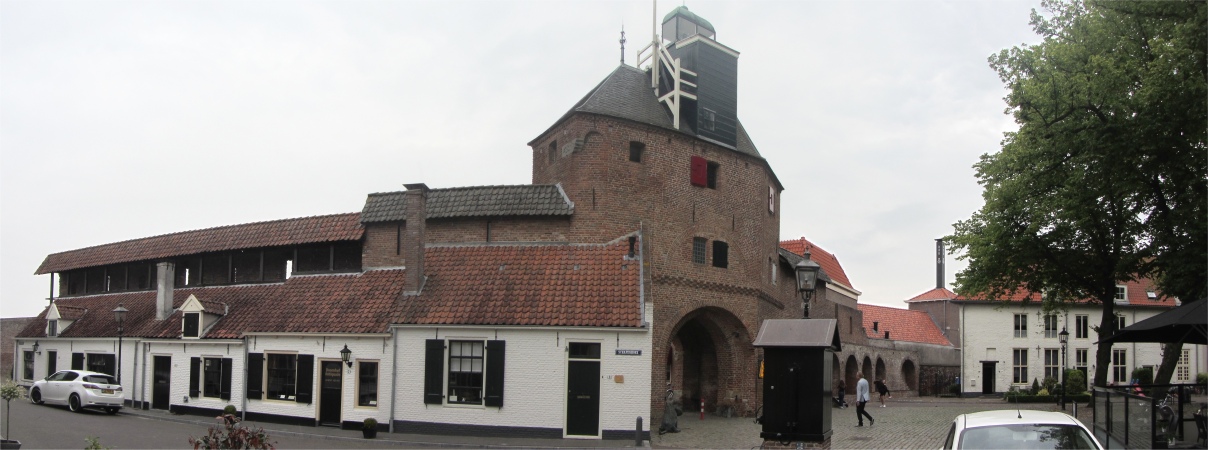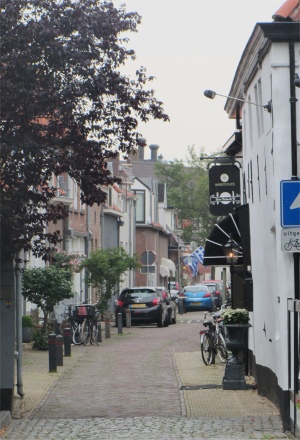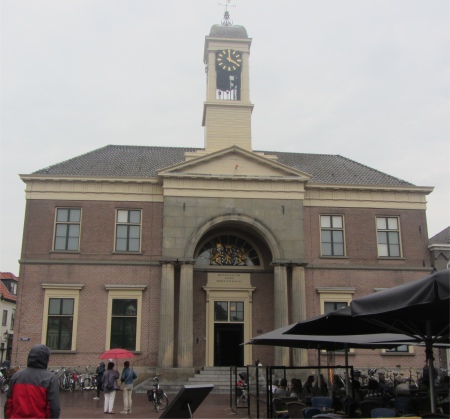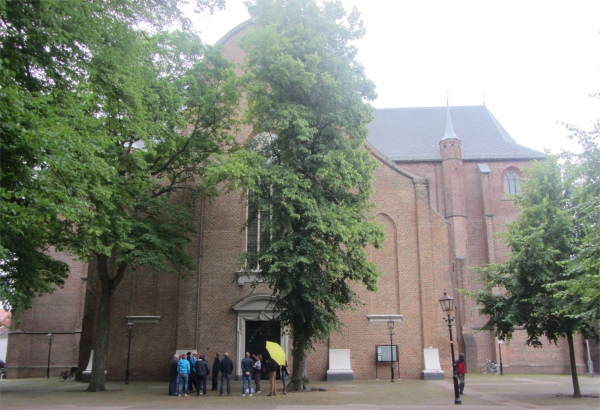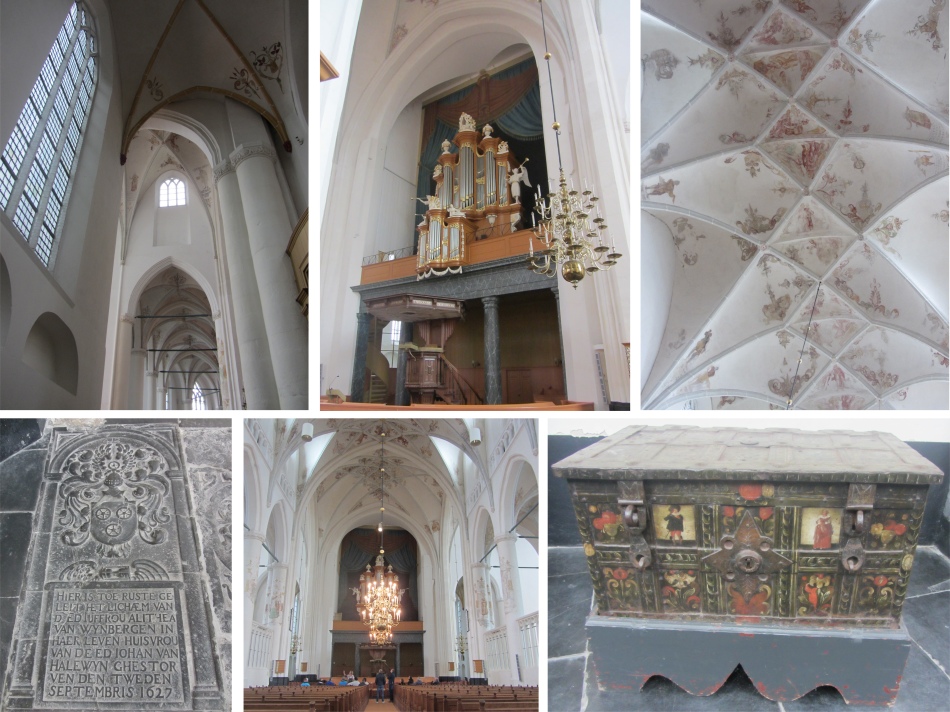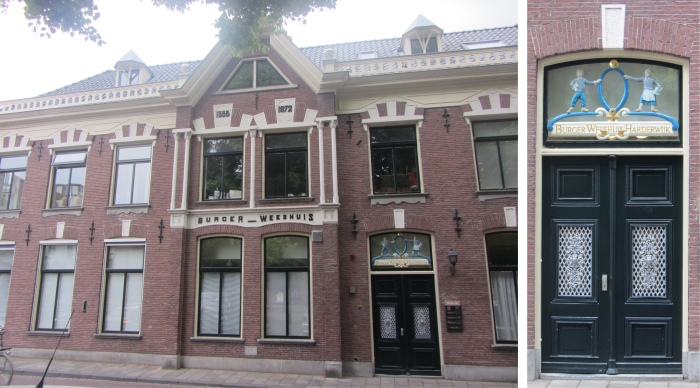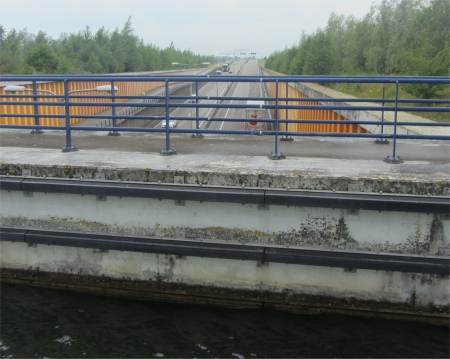 Aquaduct at Harderwijk |
We gilled and gilled. A barge slowly glided up to the shore near the bridge, fully laden with ballast, the water up to its gunwales and noticeably sagging in the middle, similar to the barge we had seen at Urk the previous day. It nestled up to a wall of piling, and a crane with a grabber immediately began to unload the ballast. The solitary barge man shovelled spillage piled up on his decks.
We gilled and gilled, more yachts turned up and gilled. Over VHF we could hear other craft trying to raise the bridge operator, but there was a null response. To relieve the boredom, I observed the barge being unloaded by the crane, which appeared to be a fairly quick operation. While we still gilled, the barge was completely emptied of its load of ballast, and now rose 2m higher out of the water, and appeared to sag less. After 70 minutes of gilling the bridge opened.
By this time, Rex had forgotten all about his back which had been worse today, and was now a muttering wreck with a purple visage. He swore in fluent Dutch. I'd say he was a tad disappointed.
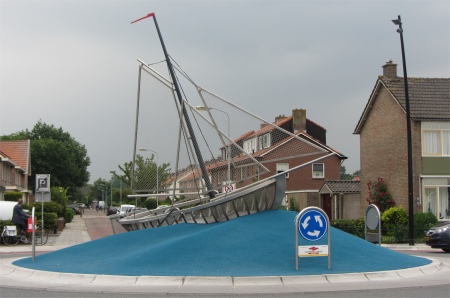 Roundabout for Yachts? |
Harderwijk, like many of the Dutch cities, was founded during medieval times. It received city rights from Count Otto II of Guelders in 1231. A defensive wall surrounding the city was completed by the end of that century. The city became a merchant city, fully involved in European trade as early as the 14th century. Ships from Harderwijk traded wool, skins, herring and wood with Germany, Britain and Flanders.
 Molen de Hoop |
Between 1648 and 1811 the University of Harderwijk operated in the city. The Swedish botanist, physician and zoologist, Carl Linnaeus graduated at this university. The university, together with the universities of Zutphen and Franeker, was abolished by Napoleon in 1811.
Harderwijk, like nearby Elburg, was a member of the Hanseatic League. It lies on what used to be the Zuiderzee shore (Southern Sea, now the IJsselmeer) and consequently its economy was strongly based on fishing and seafaring in general. This dramatically changed after 1932, when the Zuiderzee was cut off from the North Sea for safety reasons. Because of this, few fishing boats remain in the harbour these days, which is now mainly home to yachts. An annual event illustrating the former importance of the fishing industry to Harderwijk is Aaltjesdag, which translates to Eel day. Fish can still be bought at stands and restaurants on the boulevard throughout the year except for the winter months. Nowadays, Harderwijk is most known for the Dolfinarium, the largest marine mammal park of the Netherlands. The park has, as the name implies, dolphin shows and many other fish and marine mammals.
 Rex About to Enter the Town via the Vischpoort |
After an age we walked by a very large fast-food outlet selling nothing but seafood, and passed a windmill by the Visserhaven before we crossed the Visserhaven via a small bridge. The Molen de Hoop (Hope Mill) is still in use as a grain mill. The current mill dates from 1778, and stood in Weesp, a small town on the Vecht just south of the Ijsselmeer, until 1913. In 1913 the mill was sold and transported to Oldenzaal by train. The mill continued to be wind operated until 1928, after which it became reliant on electric grinding. The Harderwijk Molen Foundation bought the mill in 1993, and the mill was brought from Oldenzaal to Harderwijk. In 1998 this mill was put back into service.

